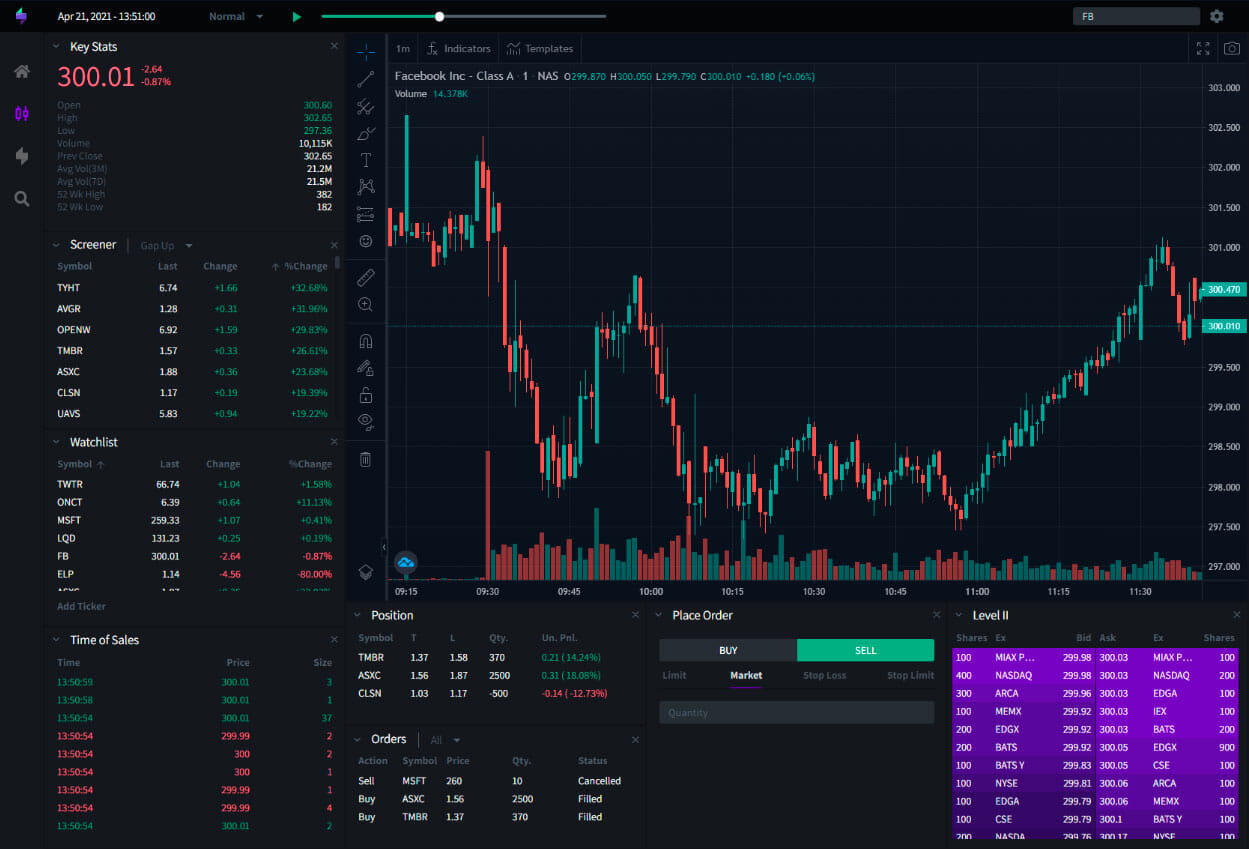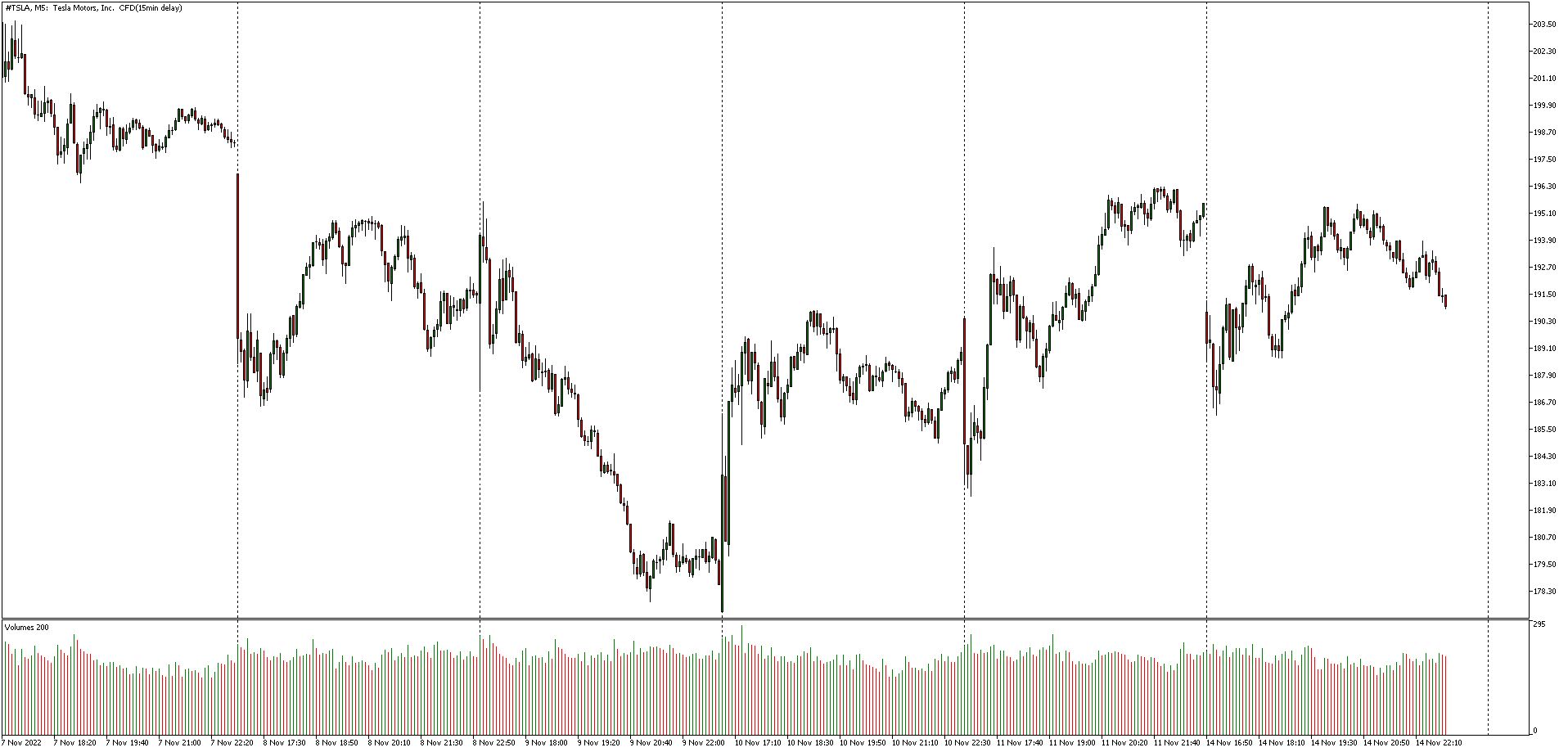Introduction
Welcome to the world of stock trading! Trading stocks can be an exciting and potentially profitable venture, but it’s essential to approach it with the right knowledge and skills. Whether you’re a beginner or an experienced investor looking to sharpen your trading abilities, this guide will provide you with valuable insights on how to practice trading stocks effectively.
Stock trading involves buying and selling shares of publicly traded companies on stock exchanges. It can be done through various platforms, including traditional brokerage firms or online trading platforms. However, before you jump into the exhilarating world of stock trading, it’s crucial to have a solid understanding of the basics.
In this guide, we will explore the fundamental principles of stock trading and provide you with step-by-step instructions on how to practice and improve your trading skills. We will cover essential topics like choosing a trading strategy, setting up a trading account, developing a trading plan, and learning technical analysis.
Additionally, we will delve into the importance of practicing paper trading, managing risk and emotions, practicing patience and discipline, and analyzing your performance. These are all crucial aspects that contribute to your success as a trader.
By following the strategies and tips outlined in this guide, you will gain the confidence and experience necessary to navigate the stock market effectively. However, it’s important to remember that stock trading is not a guaranteed path to financial success. It requires dedication, continuous learning, and a willingness to adapt to ever-changing market conditions.
With that said, let’s dive into the fascinating world of stock trading and discover how you can hone your skills to become a successful trader.
Understanding the Basics of Stock Trading
Before you start practicing stock trading, it’s crucial to have a solid understanding of the fundamental principles that drive the stock market. Here are some essential concepts to grasp:
Stocks: Stocks, or shares, represent ownership in a company. When you buy shares of a company, you become a partial owner and have the potential to profit from its success.
Stock Exchanges: The stock market is where stocks are bought and sold. Examples of major stock exchanges include the New York Stock Exchange (NYSE) and the Nasdaq. These exchanges provide a platform for investors to trade stocks.
Stock Price: The price of a stock is determined by supply and demand. It can fluctuate throughout the trading day, influenced by factors such as company performance, economic news, and investor sentiment.
Market Orders: A market order is an instruction to buy or sell a stock at the current market price. Market orders are executed quickly, but the price at which the order is executed may differ slightly from the quoted price.
Limit Orders: A limit order is an instruction to buy or sell a stock at a specific price or better. It allows you to specify the maximum price at which you’re willing to buy or the minimum price at which you’re willing to sell.
Bid and Ask Prices: The bid price is the highest price a buyer is willing to pay for a stock, while the ask price is the lowest price a seller is willing to accept. The difference between the bid and ask price is called the spread.
Stock Indexes: Stock indexes, such as the S&P 500 and the Dow Jones Industrial Average, measure the performance of a group of stocks. They are used as benchmarks to evaluate the overall market performance.
By familiarizing yourself with these concepts, you will have a solid foundation to build upon as you delve deeper into the world of stock trading. Understanding the basics will help you make informed decisions and navigate the market with confidence.
Choosing a Trading Strategy
When it comes to practicing stock trading, having a well-defined trading strategy is essential. A trading strategy is a set of rules and guidelines that you follow to make trading decisions. Here are some popular trading strategies to consider:
Day Trading: Day traders aim to profit from short-term price fluctuations. They open and close trades within the same trading day, avoiding the overnight risks associated with holding positions overnight. Day traders often rely on technical analysis and use tools such as candlestick charts and moving averages to identify potential trading opportunities.
Swing Trading: Swing traders aim to capture medium-term price movements. They hold positions for a few days to several weeks, taking advantage of price trends. Swing traders often use technical indicators, trend lines, and chart patterns to identify entry and exit points.
Position Trading: Position traders hold positions for an extended period, ranging from weeks to several months. They aim to profit from longer-term trends in the market. Position traders typically rely on fundamental analysis, studying company financials and market conditions to make their trading decisions.
Momentum Trading: Momentum traders focus on stocks that are experiencing significant price moves. They aim to capitalize on the momentum and join the trend, entering trades when there is a surge in buying or selling activity. Momentum traders often use indicators like the Relative Strength Index (RSI) and Volume to confirm price moves.
Contrarian Trading: Contrarian traders take positions opposite to the prevailing market sentiment. They believe that markets are driven by emotions and tend to overreact to news or events. Contrarian traders may look for oversold or overbought conditions in stocks and take positions against the prevailing trend.
When choosing a trading strategy, it’s important to consider your risk tolerance, time availability, and trading goals. Each strategy has its strengths and weaknesses, and what works for one trader may not work for another. It’s also crucial to backtest and practice your chosen strategy in a risk-controlled environment before implementing it with real money.
Remember, there is no “one-size-fits-all” trading strategy. It’s essential to choose a strategy that aligns with your personality, trading style, and objectives. Continuously evaluate and refine your strategy as you gain experience and adapt to changing market conditions.
Setting Up a Trading Account
Before you can start practicing stock trading, you need to set up a trading account. Here are the steps to get started:
- Choose a Brokerage Firm: Research and choose a reputable brokerage firm that suits your needs. Consider factors such as trading fees, account minimums, trading platform features, and customer support.
- Complete the Account Application: Fill out the necessary forms to open a trading account. This typically includes providing personal information, financial details, and agreeing to the terms and conditions of the brokerage firm.
- Submit Required Documentation: Depending on your jurisdiction and the brokerage firm’s requirements, you may need to submit additional documents, such as identification proof (passport or driver’s license), proof of address (utility bills or bank statements), and potentially financial statements or tax forms.
- Choose the Type of Account: Select the type of trading account you want to open, such as a cash account or margin account. A cash account requires you to have sufficient funds in your account before making trades, while a margin account allows you to borrow against your existing securities to trade with leverage.
- Deposit Funds: Once your account is approved, deposit funds into your trading account. Most brokerage firms offer various funding options, including bank transfers, debit/credit card payments, and electronic payment systems.
- Set Up Security Measures: Take steps to secure your trading account. This includes setting up strong passwords, enabling two-factor authentication, and regularly monitoring your account for any suspicious activity.
- Explore the Trading Platform: Familiarize yourself with the trading platform provided by your brokerage firm. Explore its features, order types, charting tools, and research resources. Additionally, take the time to understand how to execute trades, monitor your portfolio, and access important account information.
Setting up a trading account is an important first step in your stock trading journey. It provides you with the necessary tools and access to the financial markets. Ensure that you understand the fees associated with your account and consult with your brokerage firm’s customer support if you have any questions or need assistance.
Remember, trading involves risks, and it’s important to start with a small amount of capital that you can afford to lose. As you gain experience and confidence, you can gradually increase your trading size and explore more advanced strategies.
Developing a Trading Plan
A trading plan is a vital tool that outlines your trading goals, strategies, and risk management rules. It serves as a roadmap for your trading activities and helps you make rational decisions in the face of market uncertainty. Here are key steps to develop a solid trading plan:
- Define Your Trading Goals: Start by identifying your long-term and short-term trading goals. Do you want to generate regular income, grow your investment portfolio, or achieve a specific financial milestone? Setting clear goals helps guide your decision-making process.
- Determine Your Risk Tolerance: Understand your risk tolerance and define the maximum amount of capital you are willing to risk on each trade. This will help you establish position sizing rules and manage your risk effectively.
- Select Your Trading Method: Decide which trading strategies and techniques align with your personality and trading style. Consider factors such as time availability, market conditions, and the type of analysis you are comfortable with, whether it’s technical analysis, fundamental analysis, or a combination of both.
- Set Entry and Exit Criteria: Determine the criteria for entering and exiting trades. This includes identifying specific technical indicators, chart patterns, fundamental factors, or a combination of signals that will trigger a trade. Define your profit targets and stop-loss levels to protect your capital.
- Establish Risk Management Rules: Implement risk management techniques to protect your trading capital. This includes setting a maximum percentage of your account that you’re willing to risk on each trade, using stop-loss orders, applying trailing stops, and diversifying your portfolio.
- Document and Review Your Plan: Write down your trading plan, including all the above details. Regularly review and update your plan as needed, based on your performance, market conditions, and evolving trading goals.
- Practice Consistency and Discipline: Stick to your trading plan and avoid impulsive or emotional decisions. Follow your strategy’s rules and avoid chasing quick gains or deviating from your plan due to fear or greed.
Developing a trading plan is crucial for long-term success in stock trading. It helps you maintain focus, manage risk, and make objective decisions based on your predefined criteria. However, remember that no trading plan is foolproof, and flexibility is necessary to adapt to a changing market environment.
Continuously assess your trading plan’s effectiveness, record your trades, and evaluate your performance to identify potential areas of improvement. It’s an ongoing process that allows you to refine your strategies and enhance your trading skills over time.
Learning Technical Analysis
Technical analysis is a widely used approach in stock trading that involves analyzing historical price patterns and market trends to predict future price movements. By understanding technical analysis, you can make more informed trading decisions based on chart patterns, indicators, and other tools. Here are some key concepts to focus on when learning technical analysis:
- Candlestick Patterns: Candlestick charts display the price movement of a stock over a specific period. Learn to identify common candlestick patterns such as doji, hammer, engulfing, and shooting star. These patterns provide valuable insights into market sentiment and potential trend reversal or continuation.
- Support and Resistance Levels: Support levels are price levels where buying pressure is strong enough to prevent further price declines. Resistance levels, on the other hand, are price levels where selling pressure halts price advances. Identifying support and resistance levels helps you determine potential entry and exit points for your trades.
- Technical Indicators: There are various technical indicators available to traders, such as moving averages, Relative Strength Index (RSI), and Bollinger Bands. These indicators provide additional information about a stock’s price, momentum, and volatility, helping you confirm or challenge your trading decisions.
- Chart Patterns: Chart patterns, such as triangles, head and shoulders, and double tops or bottoms, emerge from the price action and provide insights into potential future price movements. Learning to recognize these patterns can help you identify trend reversals, breakouts, or continuations.
- Trend Analysis: Trends form the backbone of technical analysis. Identify the main trend direction – uptrend, downtrend, or sideways – using trendlines, moving averages, or price patterns. Following the trend can increase your chances of successful trades.
- Risk Management: While technical analysis helps identify potential trading opportunities, it’s crucial to manage risk effectively. Use stop-loss orders to limit losses if the market moves against your trade. Determine risk-to-reward ratios to ensure that potential profits outweigh potential losses.
Remember, technical analysis is just one tool in your trading arsenal. It is best used in conjunction with other forms of analysis, such as fundamental analysis and market sentiment. Continuously educate yourself, practice applying technical analysis concepts, and refine your skills to become a more proficient technical analyst.
Finally, keep in mind that technical analysis is not foolproof and does not guarantee successful trades. Practice proper risk management and consider multiple factors before making trading decisions.
Practicing Paper Trading
One of the most effective ways to practice and improve your stock trading skills is through paper trading, also known as virtual trading or simulated trading. Paper trading allows you to simulate real market conditions and trade stocks without risking real money. Here’s why paper trading is valuable and how to get started:
Benefits of Paper Trading:
- Zero Risk: Since paper trading involves using virtual funds, you can experiment with different strategies and techniques without the fear of losing real money.
- Learn the Trading Platform: Paper trading helps you become familiar with the trading platform provided by your brokerage. You can practice placing trades, setting stop-loss orders, and executing different order types.
- Testing Trading Strategies: Paper trading allows you to test and refine your trading strategies in a risk-free environment. You can evaluate the effectiveness of different techniques, indicators, and entry/exit criteria.
- Gaining Experience: By engaging in paper trading, you can gain valuable experience in navigating the stock market, reading charts, and managing emotions associated with trading.
Getting Started with Paper Trading:
- Choose a Paper Trading Platform: Select a reputable platform that offers paper trading functionalities. Many brokerage firms provide simulated trading accounts, while some standalone platforms specialize in virtual trading.
- Create a Demo Account: Sign up for a demo or paper trading account. This will provide you with virtual funds to practice trading without using real money.
- Set Virtual Trading Parameters: Determine the amount of virtual capital you’ll start with in your paper trading account. Typically, it’s recommended to set an amount that simulates the capital you plan to trade with in real life.
- Practice Realistic Trading Scenarios: Treat paper trading as if you were trading with real money. Consider factors such as transaction costs, slippage, and market liquidity while executing trades. Keep track of your virtual portfolio and monitor your performance closely.
- Assess and Analyze Your Trades: Review your paper trading results and analyze your trades. Identify your strengths and weaknesses, and consider adjustments to your trading strategies based on your performance.
Remember, while paper trading provides valuable experience, it cannot completely replicate the emotional aspects of real trading. Therefore, once you gain confidence through simulated trading, gradually transition to trading with real money with small positions to further develop your skills and adapt to the psychological challenges of live trading.
Managing Risk and Emotions
Managing risk and emotions is a critical aspect of successful stock trading. It’s essential to have a solid risk management plan in place and understand how emotions can impact your decision-making process. Here are some key strategies to effectively manage risk and emotions:
Define Your Risk Tolerance:
Before you start trading, assess your risk tolerance level. Determine the maximum amount you are willing to risk on each trade and ensure it aligns with your overall financial goals. This will help you set appropriate position sizes and avoid taking excessive risks that may lead to significant losses.
Use Stop-Loss Orders:
Implementing stop-loss orders is one of the most effective ways to manage risk. A stop-loss order is a predetermined price at which you will automatically exit a trade to limit your losses. Set your stop-loss orders based on your risk tolerance and the volatility of the stock being traded.
Diversify Your Portfolio:
Spreading your capital across different stocks, sectors, or asset classes can help mitigate risk. By diversifying, you reduce the impact of any single stock or market event on your overall portfolio. Be mindful of correlations between stocks and ensure your portfolio provides a balance of risk and potential returns.
Stick to Your Trading Plan:
Having a well-defined trading plan is crucial for managing risk and emotions. Follow your plan’s rules, including entry and exit criteria, position sizing, and risk management strategies. Avoid impulsive decisions based on emotions or external market noise that do not align with your trading plan.
Control Your Emotions:
Emotions, particularly fear and greed, can heavily influence trading decisions. It’s important to cultivate emotional discipline and remain objective in your analysis and decision-making. Avoid chasing hot stock tips or getting caught up in market euphoria. Maintain a long-term perspective and focus on the bigger picture.
Practice Patience:
Patience is a virtue in stock trading. Avoid rushing into trades without proper analysis. Wait for ideal setups and confirmations before entering or exiting positions. Market conditions can be unpredictable, and patient trading allows you to make more informed decisions with reduced risk.
Regularly Evaluate Performance:
Assessing and analyzing your trading performance is essential for continuous improvement. Keep a trading journal to record your trades, emotions, and rationales behind each decision. Review your trades regularly to identify patterns, strengths, and weaknesses. Learn from your mistakes and adapt your strategies accordingly.
Successfully managing risk and emotions takes time and practice. It requires self-discipline, continuous learning, and the ability to control your impulses. By implementing effective risk management strategies and staying emotionally grounded, you can increase your chances of long-term trading success.
Practicing Patience and Discipline
Patience and discipline are crucial attributes for successful stock trading. These qualities allow you to stay focused, follow your trading plan, and make informed decisions based on careful analysis rather than impulsive reactions. Here are key practices to cultivate patience and discipline in your trading journey:
Stick to Your Trading Plan:
Having a well-defined trading plan is essential for maintaining discipline. Follow your plan’s rules, including entry and exit criteria, risk management strategies, and position sizing. Avoid deviating from your plan based on greed or fear and trust the process you have established.
Accept Occasional Losses:
Losses are an inevitable part of trading. Learn to accept that not every trade will be profitable. Instead of dwelling on losses, focus on preserving capital and maintaining a consistent long-term strategy. Patience will help you weather small setbacks and avoid making hasty decisions to chase losses.
Avoid Overtrading:
Overtrading can lead to impulsive decisions and excessive risk-taking. Be patient and wait for high-quality setups that align with your trading criteria. Don’t feel compelled to trade every day or in every market condition. Quality over quantity is key to long-term success.
Manage Fear and Greed:
Fear and greed are common emotional drivers in trading. It’s essential to recognize these emotions and not let them dictate your decisions. Be mindful of excessive optimism or pessimism in the market and maintain a balanced approach. Making decisions based on logic and analysis, rather than emotions, will lead to more consistent results.
Practice Delayed Gratification:
Trading is a marathon, not a sprint. Cultivate the mindset of delayed gratification, understanding that long-term success requires patience and consistent effort. Avoid seeking quick gains or looking for shortcuts. Set realistic goals and focus on gradual progress and improvement over time.
Take Breaks and Rest:
Trading can be mentally and emotionally demanding. It’s crucial to take regular breaks and ensure you’re well-rested and in the right state of mind. Fatigue and stress can cloud judgment and lead to impulsive decisions. Taking breaks allows you to recharge and approach trading with a clear and focused mindset.
Continuously Educate Yourself:
Maintaining patience and discipline requires ongoing learning and self-improvement. Stay updated on market trends, trading strategies, and new developments in the financial industry. Expand your knowledge through books, courses, webinars, and interaction with fellow traders. Continuously refining your skills and staying informed helps build confidence in your decision-making process.
Remember, patience and discipline are not innate qualities; they are skills that can be developed and honed over time. By practicing these principles in your trading, you can navigate volatile markets with composure, make rational decisions, and stay focused on your long-term trading goals.
Analyzing Your Performance
Analyzing your trading performance is a crucial step towards continuous improvement and long-term success in stock trading. By regularly evaluating your trades and strategies, you can identify strengths, weaknesses, and areas for improvement. Here are key steps to analyze your performance:
Keep a Trading Journal:
Maintain a detailed trading journal to record your trades, including entry and exit points, position sizes, reasoning behind each trade, and emotions experienced during the trade. Include charts, screenshots, and any relevant notes. The trading journal serves as a valuable resource for analyzing your past trades and patterns.
Review Your Trades:
Regularly review and assess your trades to gain insights into your performance. Look for patterns in winning and losing trades. Analyze the factors that led to successful trades and the mistakes that resulted in losses. Identify any recurring tendencies or behaviors that may positively or negatively impact your trading decisions.
Evaluate Risk and Reward:
Assess the risk-reward ratios of your trades. Determine if you consistently follow your risk management guidelines and adjust your position sizing accordingly. Analyze if the potential rewards aligned with the risks taken. Aim for a positive risk-reward ratio in trades to tilt the odds in your favor.
Assess Your Emotional State:
Examine the influence of emotions on your trading decisions. Identify if fear, greed, or impatience have affected your trade execution or exiting positions prematurely. Understanding your emotional responses can help you develop strategies to manage and overcome these detrimental behaviors.
Track and Analyze Performance Metrics:
Monitor key performance metrics, such as win rate (percentage of winning trades), average gain/loss per trade, and the maximum drawdown (the largest loss experienced in your trading account). Analyze these metrics to assess the effectiveness of your trading strategies and to identify areas for improvement.
Consider Market Conditions:
Take into account the impact of market conditions on your trading performance. Evaluate if your strategies are well-suited for different market environments such as ranging, trending, or volatile markets. Adjust your approach or develop new strategies to align with prevailing market conditions.
Seek Feedback and Mentorship:
Obtain feedback from experienced traders or seek mentorship to gain an objective perspective on your trading performance. Engaging with a community of traders can provide valuable insights, alternative approaches, and constructive feedback that can enhance your trading skills.
Implement Changes Gradually:
Based on your analysis, make incremental improvements to your trading strategies, risk management techniques, or emotional control. Avoid making sweeping changes all at once, as it may be difficult to evaluate their effectiveness. Implement changes gradually and assess their impact on your performance.
Continuously Learn and Adapt:
The stock market is dynamic, and continuous learning is essential. Stay up-to-date with market trends, research new trading strategies, and keep refining your skills. Adaptability and a growth mindset will help you stay ahead in a changing trading landscape.
Remember, analyzing your performance is an ongoing process. Regularly review your trades, adapt your strategies, and aim for continuous improvement. By learning from past experiences and implementing necessary changes, you can become a more effective and successful trader over time.
Continuing Education and Improvement
In the ever-evolving world of stock trading, continuing education and constant improvement are crucial for staying competitive and achieving long-term success. As a trader, it’s essential to actively seek new knowledge, refine your skills, and adapt to changing market conditions. Here are key practices for continuing education and improvement:
Read Books and Publications:
Read widely about the stock market, trading strategies, technical analysis, fundamental analysis, and market psychology. Books written by experienced traders or renowned investors offer valuable insights and perspectives. Stay updated with financial publications, industry journals, and reputable online sources for market news and analysis.
Take Specialized Courses:
Consider enrolling in specialized trading courses or workshops offered by reputable institutions or experienced traders. These courses can provide in-depth knowledge on specific aspects of trading, technical analysis, risk management, or trading psychology. Continuous learning through structured courses helps hone your skills and deepen your understanding of various trading topics.
Attend Webinars and Seminars:
Participate in webinars or seminars conducted by industry experts and successful traders. These events offer valuable insights and practical tips. They also provide an opportunity to interact with other traders and expand your network.
Join Trading Communities:
Become a part of trading communities, both online and offline. Engage with fellow traders, share experiences, and exchange ideas. Participate in discussion forums, social media groups, and trading-focused websites. Collaborating with other traders can provide alternative perspectives and help you stay up-to-date with market trends and strategies.
Simulate and Backtest Trading Strategies:
Simulate and backtest your trading strategies using historical data to evaluate their performance in different market scenarios. Utilize trading software or platforms that allow for backtesting and optimize your strategies based on past data.
Analyze Real-Time Market Data:
Regularly analyze real-time market data to identify patterns, trends, and opportunities. Use charting tools, technical indicators, and fundamental analysis to make informed trading decisions based on current market conditions.
Learn from Mistakes:
Embrace mistakes as learning opportunities. Review your losing trades and analyze what went wrong. Identify patterns or errors in your decision-making and develop strategies to overcome them. Learning from your mistakes helps you refine your trading approach and become more resilient.
Stay Updated with Technology:
Stay informed about advancements in trading technology. Utilize trading platforms, software, and tools that can enhance your trading experience and efficiency. Keep abreast of new features, algorithmic trading techniques, and automation to stay competitive.
Develop a Growth Mindset:
Cultivate a growth mindset that embraces continuous learning and improvement. Be open to new ideas, adapt to market changes, and be willing to challenge existing beliefs. Embrace failures as opportunities to learn and develop resilience.
Continuing education and improvement are essential aspects of a successful trader’s journey. By consistently investing in your education, adapting to new developments, and analyzing your trading performance, you can refine your skills, expand your trading abilities, and strive for consistent profitability in the dynamic world of stock trading.
Conclusion
Congratulations! You have now gained valuable insights into how to practice trading stocks effectively. Remember that stock trading is a journey that requires continuous learning, adaptability, and discipline. By understanding the basics of stock trading, choosing a suitable trading strategy, setting up a trading account, and developing a trading plan, you have laid the foundation for your journey as a trader.
Learning technical analysis, practicing paper trading, and managing risk and emotions are essential components of becoming a successful trader. By mastering these skills, you can make informed trading decisions, manage your capital effectively, and navigate the market with confidence.
Continuing education and improvement are key to your long-term success. Stay informed about market trends, refine your trading strategies, and seek new knowledge through books, courses, webinars, and interactions with other traders. Regularly analyze your trading performance, identify strengths and weaknesses, and make necessary adjustments to enhance your trading abilities.
Remember, successful trading requires patience, discipline, and the ability to manage emotions. Stay patient during market fluctuations, adhere to your trading plan, and avoid impulsive decisions driven by fear or greed. Develop emotional resilience to overcome setbacks and stay focused on your long-term goals.
As you embark on your trading journey, keep in mind that stock trading carries risks, and no strategy guarantees profits. It’s crucial to start with a small amount of capital, practice proper risk management, and never invest more than you can afford to lose.
With dedication, continuous learning, and a commitment to improvement, you can evolve into a skilled and successful trader. Best of luck in your stock trading endeavors!

























